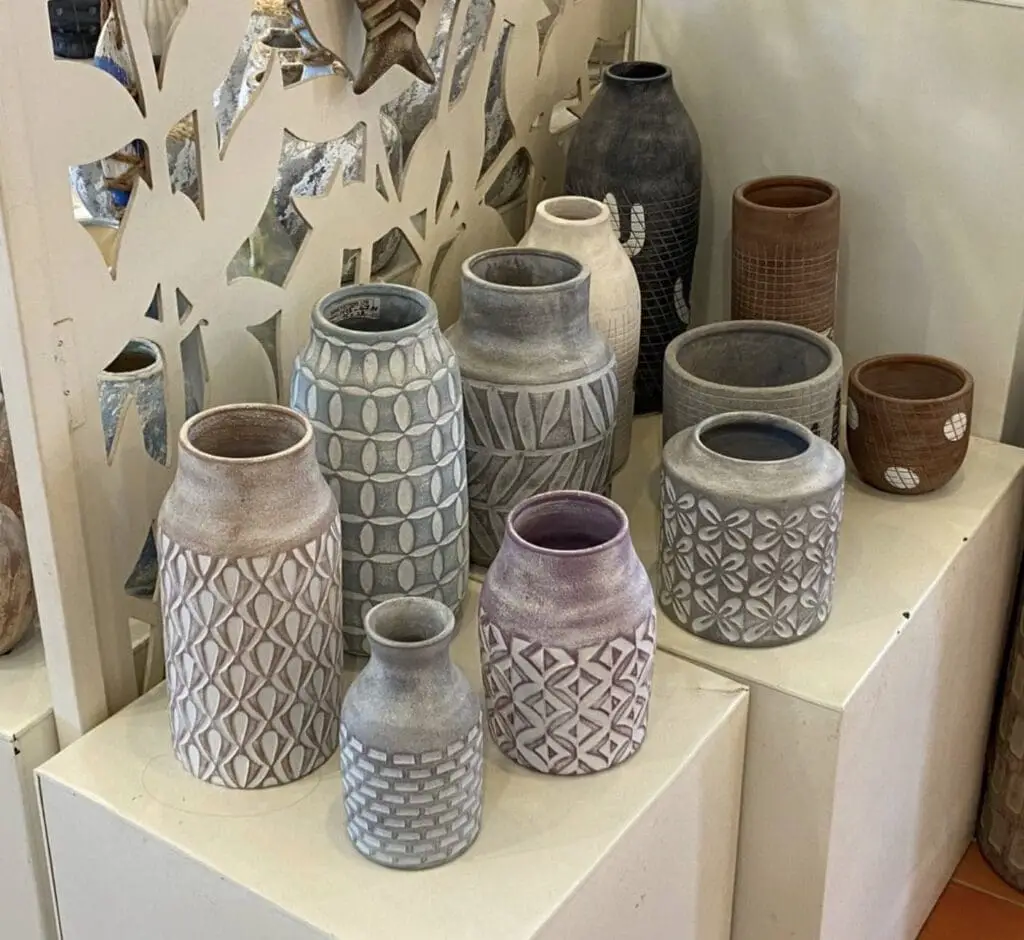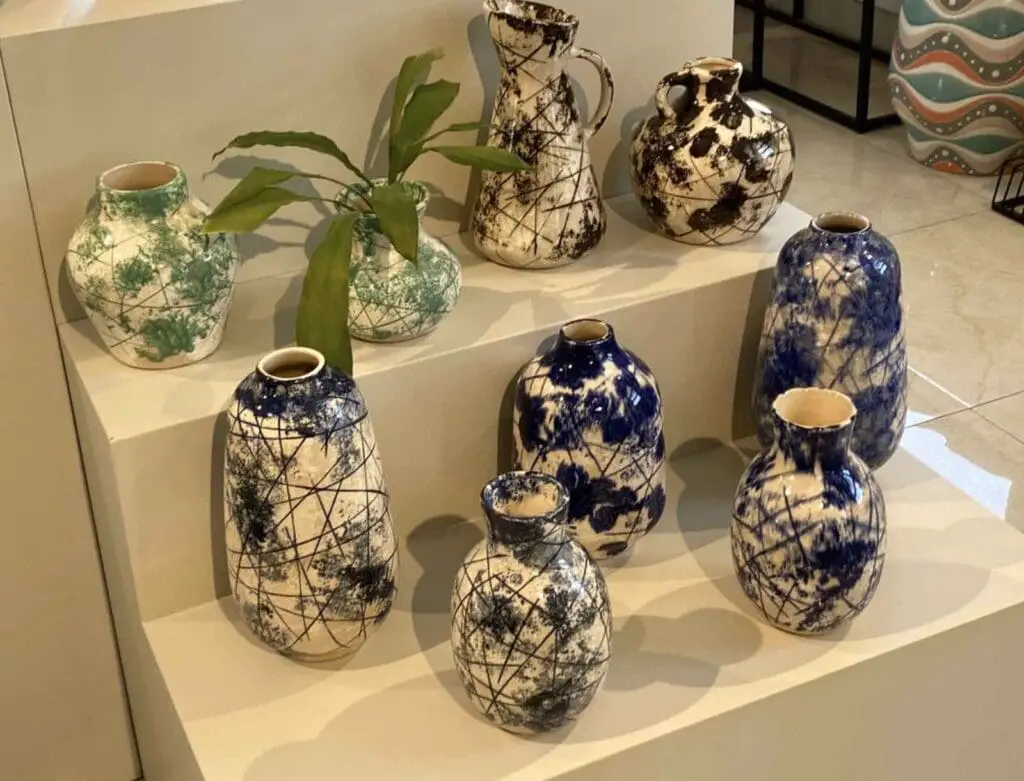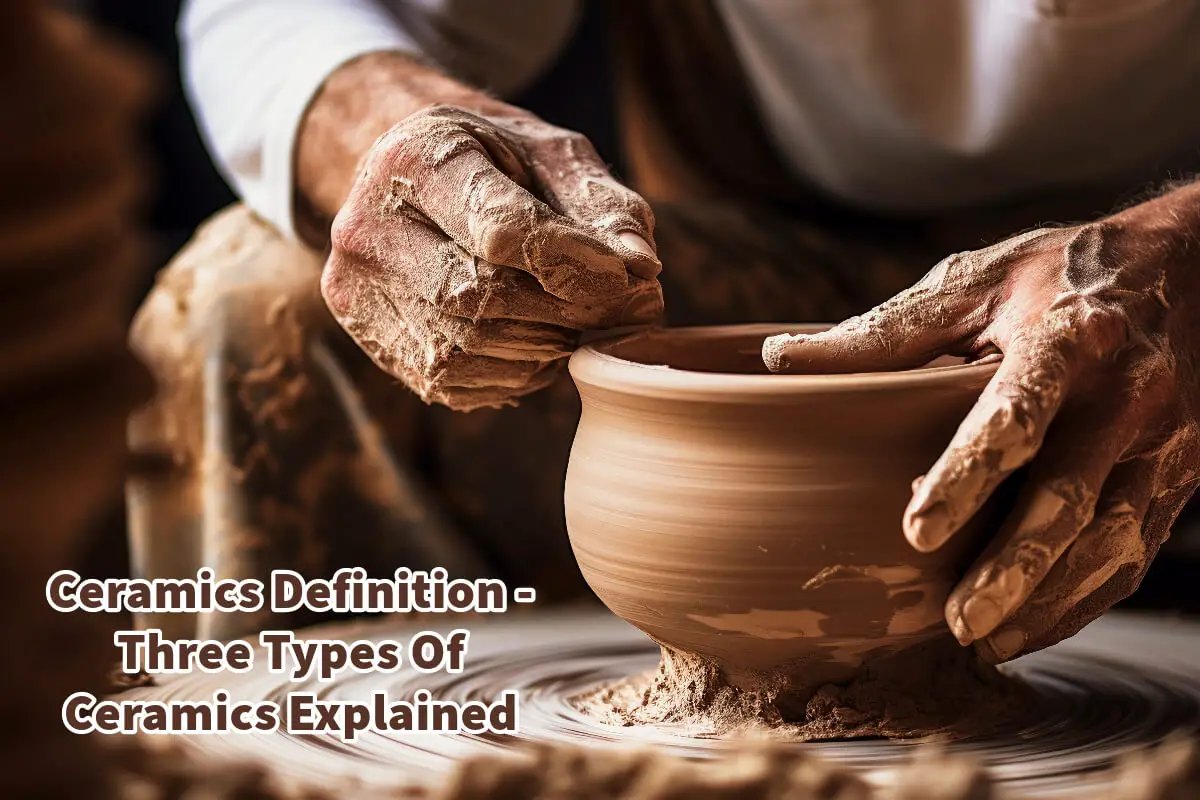The term “ceramic” is often associated with various home decor items, but its application extends far beyond that. While ceramics have a rich history spanning centuries, their uses have evolved dramatically.
Ceramics was once limited to simple clay pots, and ceramics now cover an expansive range of materials and applications. From earthenware tableware and stoneware kitchenware to intricate porcelain art pieces and cutting-edge ceramics in high-tech devices, these materials have become indispensable in our everyday lives and advanced technologies. The ongoing evolution of ceramics ensures that they will continue to serve innovative and diverse functions.
Table of Contents
- Ceramics Explained: Definition And Three Main Types
- Three Major Types Of Traditional Ceramics
- Other Types Of Ceramics
- Frequently Asked Questions
- Related Content
Ceramics Explained: Definition And Three Main Types
Ceramics have been a cornerstone of human civilization for thousands of years, and their applications are constantly evolving. From simple earthenware pots to cutting-edge high-temperature ceramics used in aerospace engineering, ceramics are as varied as they are fascinating.
But what are ceramics? How are they made? And what are the different types of ceramics that are commonly used today?
What Are Ceramics?
Ceramics are inorganic, non-metallic solids made from metal or non-metal compounds. They are shaped and then subjected to high heat, resulting in a hardened form.
Most ceramics are known for their hardness, corrosion resistance, and brittleness. “ceramic” originates from the Greek word ‘keramikos,’ meaning ‘pottery.
However, modern usage of the term extends beyond clay-based items to include substances like glass, advanced ceramics, and certain types of cement.
Three Major Types Of Traditional Ceramics
There are various categories of ceramics, each with distinct characteristics and uses. The three primary types are earthenware, stoneware, and porcelain. In addition, bone china offers a unique blend of durability and elegance.
Furthermore, advanced ceramics have broadened the material’s applications in high-tech fields. These specialized ceramics now play crucial roles in various technological advancements.
Earthenware
Earthenware holds the distinction of being one of the oldest forms of ceramics known to humanity. It is commonly used for tableware, ornamental objects, and other domestic applications.
The firing process for earthenware happens at relatively low temperatures, usually between 1,000 and 1,150°C. This results in a somewhat porous and coarse final product. To counteract its porous nature, a second firing is usually done after the object has been covered with a glaze made from finely ground glass powder suspended in water.
This makes it more appealing and functional. Examples of earthenware include Faience, Delft, and Majolica.
Stoneware
Stoneware represents a more durable and less porous form of ceramic. It is fired at higher temperatures—around 1,200°C—until it becomes vitrified or glass-like.

Because of its non-porous nature, glazes are generally applied only for decorative purposes. Stoneware’s sturdiness, chip resistance, and durability make it ideal for cooking, baking, storing liquids, and serving dishes.
Porcelain
Porcelain is a high-end, challenging, and translucent ceramic that often goes by ‘fine china’ because it originated in China around 1600 BC. This type of ceramic involves a more intricate manufacturing process.

It incorporates small amounts of glass, granite, and feldspar minerals ground into fine white kaolin clay. After shaping, porcelain is fired in a kiln at temperatures ranging from 1,200 to 1,450°C. Decorative glazes are often applied afterward, requiring an additional firing process.
Other Types Of Ceramics
In addition to the three fundamental types of ceramics—earthenware, stoneware, and porcelain—there are other specialized forms of this versatile material.
Bone China Porcelain
Bone china is a variant of porcelain noted for its superior strength and resistance to chipping. It is produced by adding ash from cattle bones to the basic porcelain mixture of clay, feldspar, and silica.
Advanced Ceramics
Unlike traditional ceramics that are usually clay-based, advanced ceramics are often made from oxides, non-oxides, or a combination.
Oxides:
Typical oxides in advanced ceramics include alumina (Al2O3) and zirconia (ZrO2).
Non-Oxides:
These are often comprised of carbides, borides, nitrides, and silicides. Examples are boron carbide (B4C), silicon carbide (SiC), and molybdenum disilicide (MoSi2).
Advanced ceramics possess unique properties like high thermal stability, extreme hardness, and excellent electrical insulating qualities, making them invaluable in various high-tech applications. These include electronics, medical implants, and even space exploration.
Ceramics have come far from their humble beginnings as crude clay pots. Today, they encompass various materials and applications, from the domestic to the highly specialized.
Whether it’s earthenware dishes, stoneware baking pans, porcelain vases, or advanced ceramic components in electronic devices, ceramics are a vital part of our daily lives and technological progress. Their fascinating evolution promises even more innovative uses in the future.
At Mondoro, we specialize in crafting a wide range of ceramic home decor items for export. If you’re in the market for high-quality ceramics and are interested in manufacturing for export, we’d be delighted to connect with you. Feel free to reach out to us!
Find out more about how Mondoro can help you create, develop, and manufacture excellent home decor and furniture products – don’t hesitate to contact me, Anita. Check out my email by clicking here or become a part of our community and join our newsletter by clicking here.
Mondoro gives out a FREE Lookbook to anyone interested. You can receive a copy of our latest Lookbook by clicking here.
Listen to our Podcast called Global Trade Gal. You can find it on all major podcast platforms. Try out listening to one of our podcasts by clicking here.
Subscribe to our Mondoro Company Limited YouTube Channel with great videos and information by clicking here.
Frequently Asked Questions
What is the definition of ceramics?
Ceramics refer to a broad class of inorganic, non-metallic materials primarily composed of compounds of metallic and non-metallic elements. These materials are typically hardened through firing at high temperatures.
How have ceramics evolved over time?
Originally limited to simple clay pots, ceramics have evolved to encompass a wide range of materials and applications. From traditional pottery to advanced technological uses, ceramics have undergone significant transformations throughout history.
What are the three main types of ceramics?
The three primary types of ceramics are earthenware, stoneware, and porcelain. Each type has distinct properties and characteristics that make them suitable for various applications.
What is earthenware and its typical uses?
Earthenware is a type of ceramic made from porous clay fired at relatively low temperatures. It is commonly used for tableware and decorative items due to its rustic appearance and affordability.
How does stoneware differ from other types of ceramics?
Stoneware is fired at higher temperatures than earthenware, resulting in a denser and less porous material. It is often chosen for its durability and is commonly used for kitchenware and decorative pieces.
What defines porcelain as a type of ceramic?
Porcelain is a high-fired ceramic known for its translucency, strength, and smooth texture. It is often associated with fine china and delicate art pieces due to its refined appearance.
How are ceramics used in everyday life?
Ceramics are widely used in everyday life for items such as dinnerware, kitchenware, bathroom fixtures, and decorative pieces. Their versatility makes them essential in various household applications.
In what advanced technologies are ceramics employed?
Ceramics play a crucial role in high-tech applications, such as electronics, aerospace, and medical devices. Their ability to withstand extreme conditions, electrical insulation properties, and biocompatibility make them valuable in cutting-edge technologies.
Can ceramics be considered environmentally friendly?
Ceramics can be environmentally friendly, especially when made from sustainable sources. Their durability and longevity contribute to reduced waste, and some modern ceramics are designed with eco-friendly production processes.
How is the ongoing evolution of ceramics impacting their future uses?
The continuous evolution of ceramics involves the development of new materials and manufacturing techniques. This ensures that ceramics will continue to find innovative applications, ranging from traditional craftsmanship to emerging technologies, shaping their future uses in diverse fields.
Related Content
Why Is It So Hard To Find Solid Wood Furniture Manufacturers?
Locating trustworthy solid wood furniture manufacturers can be an intricate endeavor for retailers and wholesalers. The task’s complexity is rooted in many factors related to solid wood furniture’s production and manufacturing procedures. Read on as we explore the complex task of the search for solid wood furniture manufacturers and how Mondoro can help you.
You can discover more by reading Why Is It So Hard To Find Solid Wood Furniture Manufacturers? by clicking here.
Is There A Market For Reclaimed Wood?
The reclaimed wood method minimizes waste, decreases the necessity for new lumber production, and conserves the timber’s innate allure and historical essence. Moreover, reclaimed wood comes in various types, each possessing unique attributes and rich narratives. Characteristics such as weather-worn patinas, nail indentations, saw traces, and various other blemishes enhance the charm of reclaimed wood, making it a treasured choice among designers and builders.
You can discover more by reading Is There A Market For Reclaimed Wood? by clicking here.
What Is Solid Wood vs. Engineered Wood?
Solid wood is cut down from the tree, cut into wood boards, and used for manufacturing. On the other hand, engineered wood is considered manmade as it is usually manufactured with wood chips, wood shavings, and an adhesive. Today the manufacturing of engineered wood is extremely technical.
You can discover more by reading our blog All About Teak Wood And Outdod? by clicking here.


